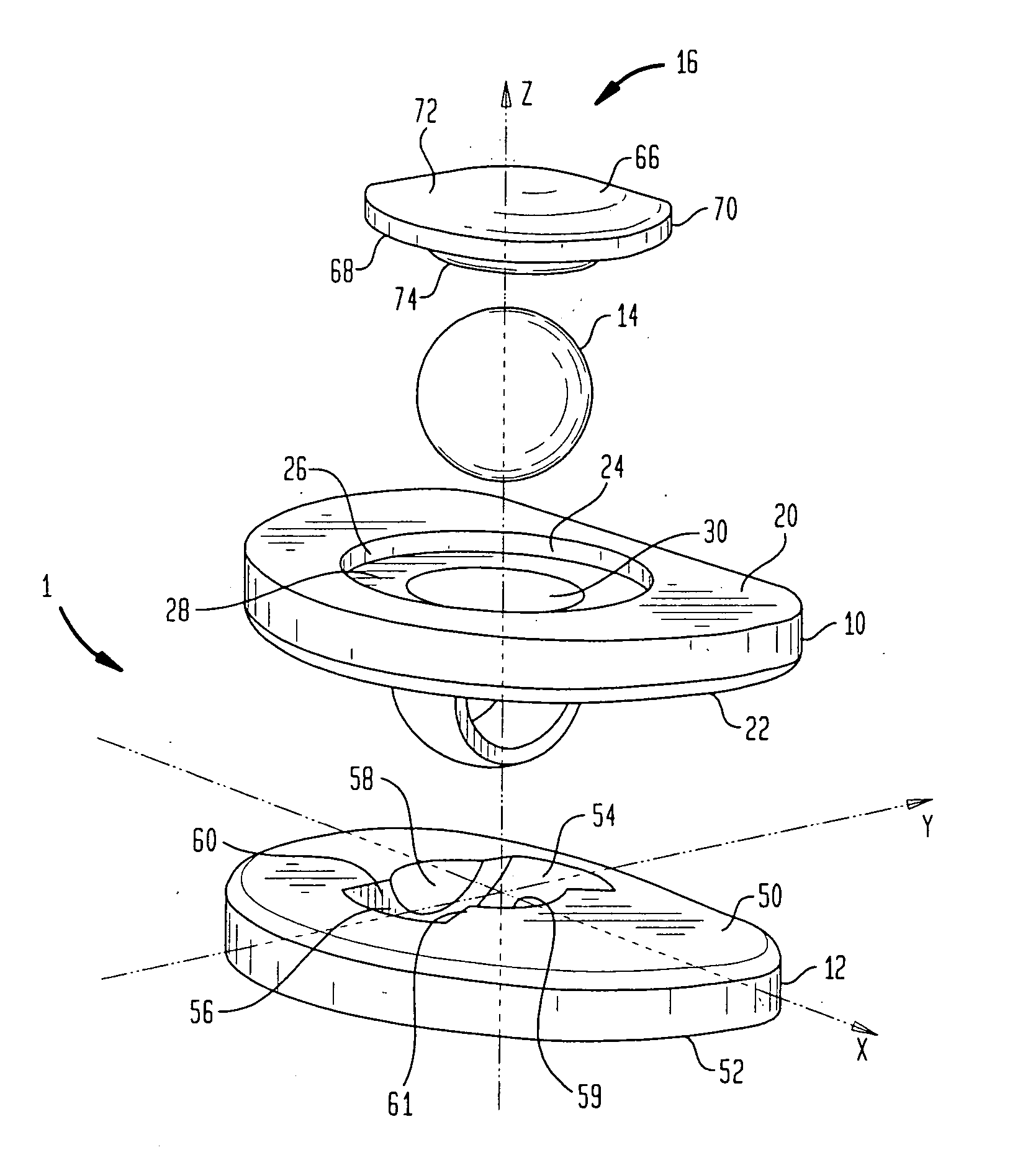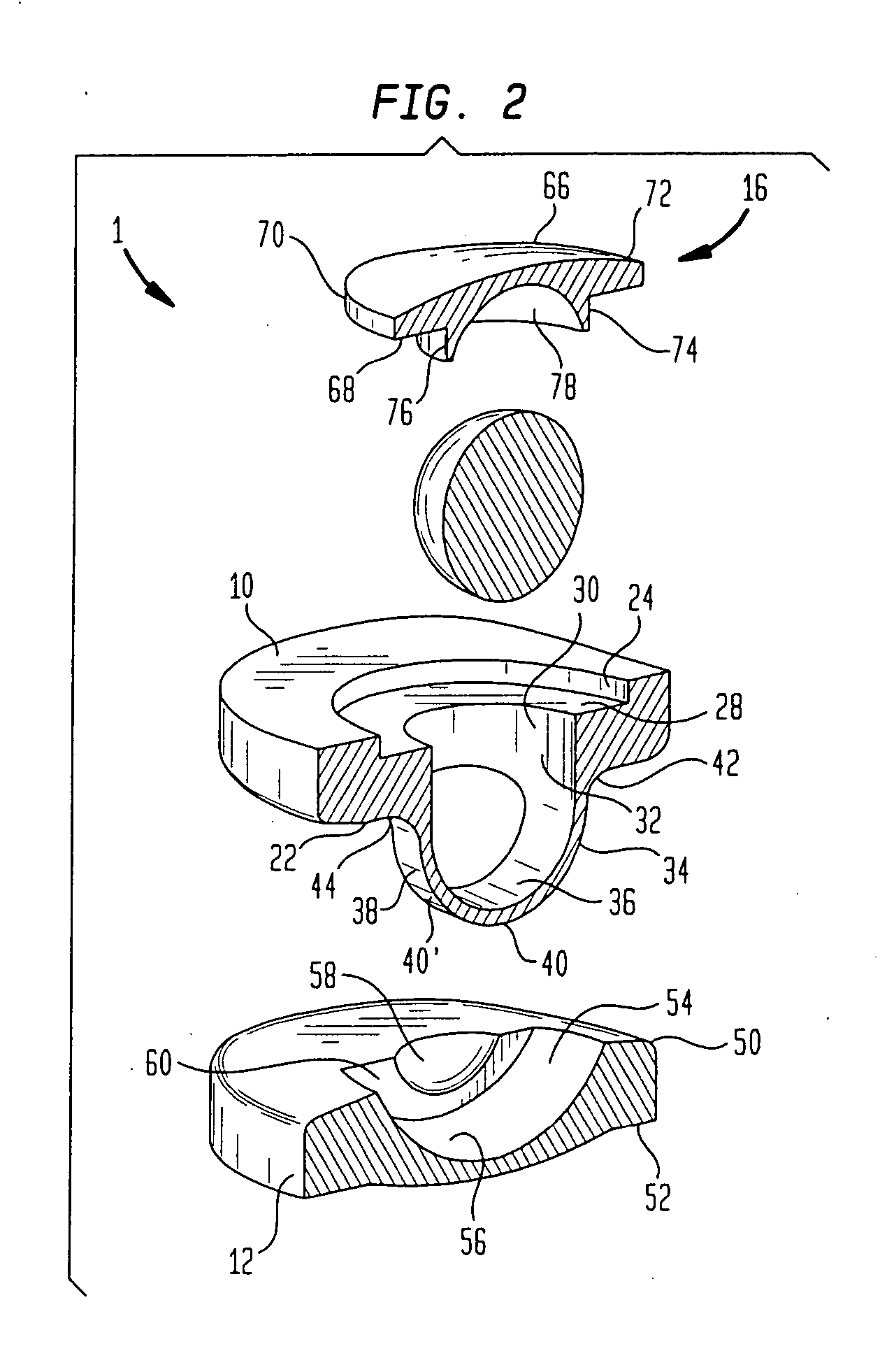Artificial intervertebral disc having a universal joint
a technology of intervertebral discs and universal joints, which is applied in the field of artificial intervertebral discs having universal joints, can solve the problems of limiting the ability of straps to come into contact with the bottom surface of grooves, and achieve the effect of increasing the range of motion
- Summary
- Abstract
- Description
- Claims
- Application Information
AI Technical Summary
Benefits of technology
Problems solved by technology
Method used
Image
Examples
Embodiment Construction
[0042] The present invention will now be described with reference to the accompanying figures. The embodiments described herein are meant to be illustrative of the present invention and in no way should be thought of as limiting the present invention.
[0043] As shown in FIG. 1, an artificial intervertebral disc 1, according to the present invention, preferably includes an upper baseplate 10, a lower baseplate 12, a ball 14 and a cover 16. Upper baseplate 10 is provided with a top surface 20 and a bottom surface 22. Disposed within the boundary of top surface 20 is a recess 24. Recess 24 includes a circular skirt 26 positioned adjacent top surface 20 and defining the outer boundary of recess 24. Recess 24 further includes a shoulder 28 defining a lower limit of the recess. An aperture 30 is disposed adjacent shoulder 28 and extends from the shoulder to bottom surface 22 of upper baseplate 10.
[0044] As best shown in FIG. 2 aperture 30 is defined by circumferential wall 32 which exten...
PUM
 Login to View More
Login to View More Abstract
Description
Claims
Application Information
 Login to View More
Login to View More - R&D
- Intellectual Property
- Life Sciences
- Materials
- Tech Scout
- Unparalleled Data Quality
- Higher Quality Content
- 60% Fewer Hallucinations
Browse by: Latest US Patents, China's latest patents, Technical Efficacy Thesaurus, Application Domain, Technology Topic, Popular Technical Reports.
© 2025 PatSnap. All rights reserved.Legal|Privacy policy|Modern Slavery Act Transparency Statement|Sitemap|About US| Contact US: help@patsnap.com



